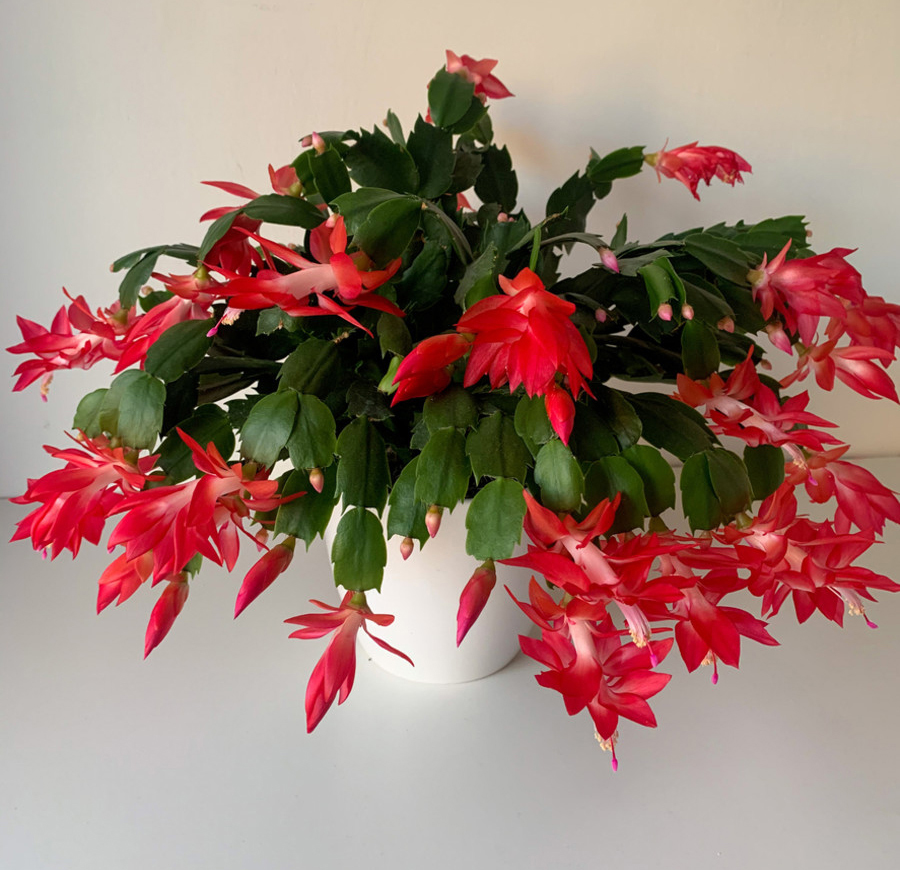Plants for the Holidays
As the holiday season officially kicks off at the beginning of December, it is time to shop for the gifts you will give your friends and family to show your appreciation. For the plant enthusiast, this is an opportunity to get your hands on some cool holiday plants.
The most popular holiday plant on the market is the poinsettia (Euphorbia pulcherrima).  Poinsettia is a woody, flowering shrub native to Mexico. It makes for such a great holiday plant because the top leaves will start turning color when the days get shorter. There are numerous varieties on the market today, with colors ranging from red, white, pink, peach, and orange. Some varieties can even have two colors or unusual leaf shapes. However, buyers should be warned about the fake coloring that is out there. Poinsettias do not come in blue or purple or naturally produce glitter on the leaves. These colors and gimmicks are natural white or cream colors that have been manipulated before going to market.
Poinsettia is a woody, flowering shrub native to Mexico. It makes for such a great holiday plant because the top leaves will start turning color when the days get shorter. There are numerous varieties on the market today, with colors ranging from red, white, pink, peach, and orange. Some varieties can even have two colors or unusual leaf shapes. However, buyers should be warned about the fake coloring that is out there. Poinsettias do not come in blue or purple or naturally produce glitter on the leaves. These colors and gimmicks are natural white or cream colors that have been manipulated before going to market.
Care for poinsettias is like that of many other tropical houseplants. Poinsettias do not like bone-dry soils, so regular watering is needed. After flowering is finished, the new leaves will emerge without their unique color and appear green. At this point, you will need to start fertilizing to keep your plant healthy. If you have allergies to latex, the milky sap could irritate if it gets on your skin.
 Amaryllis is another plant on the display shelves for the holidays. Amaryllis (Hippieasturm x hybridum) are true blubs, like onions, and are native to South America. This plant is an excellent plant for the holidays because growers can easily manipulate the flowering of the plant to be in full bloom in the wintertime. The amaryllis flowers come in various colors, shapes, and sizes. When you see one in all its glory, they are real showstoppers. From reds with white centers to white with red margins, they easily grab the attention of anyone walking by. It is important to be mindful of the pollen of the flower. Anthers on the flower can be removed to prevent stains on clothing or allergies.
Amaryllis is another plant on the display shelves for the holidays. Amaryllis (Hippieasturm x hybridum) are true blubs, like onions, and are native to South America. This plant is an excellent plant for the holidays because growers can easily manipulate the flowering of the plant to be in full bloom in the wintertime. The amaryllis flowers come in various colors, shapes, and sizes. When you see one in all its glory, they are real showstoppers. From reds with white centers to white with red margins, they easily grab the attention of anyone walking by. It is important to be mindful of the pollen of the flower. Anthers on the flower can be removed to prevent stains on clothing or allergies.
Amaryllis bulb care might be the most hands-off household plant out there. Because of the bulb structure, Hippieastrum can handle frequent dry-down periods and provide the plant with nutrients. However, when placed indoors, watering will need to be spaced out. Low temperatures and light intensity mean slower water uptake. If it sits in wet soil for long periods of time, you will certainly get fungus gnats.
For those succulent lovers, there is an attractive option out there. Holiday cacti are a group of tropical cacti native to Brazil. In their native habitat, they are epiphytes and live in the trees of the rainforest. These cacti get their name from the time in which they bloom. There is Thanksgiving (Schlumbergera truncata), Christmas cactus (S. bridgesii), and Easter cactus (S. gaertneri). Each of them can have subtle differences from one another, but they all offer color during a time when it is usually gloomy outside. This group of cacti needs humidity. If you think about the native habitat of these plants, they will need moist, humid conditions. These cacti do not like to have prolonged periods of dry feet.
tropical cacti native to Brazil. In their native habitat, they are epiphytes and live in the trees of the rainforest. These cacti get their name from the time in which they bloom. There is Thanksgiving (Schlumbergera truncata), Christmas cactus (S. bridgesii), and Easter cactus (S. gaertneri). Each of them can have subtle differences from one another, but they all offer color during a time when it is usually gloomy outside. This group of cacti needs humidity. If you think about the native habitat of these plants, they will need moist, humid conditions. These cacti do not like to have prolonged periods of dry feet.
These three plants are not the only plants you will see in stores this holiday season, but they are trendy and make excellent gifts for houseplant horticulturalists.
by Markis Hill, Horticulture Ornamentals and Turf Agent, 2024
Return to Agent Articles